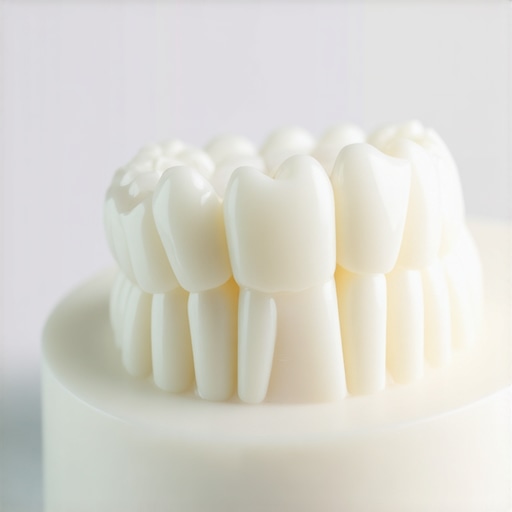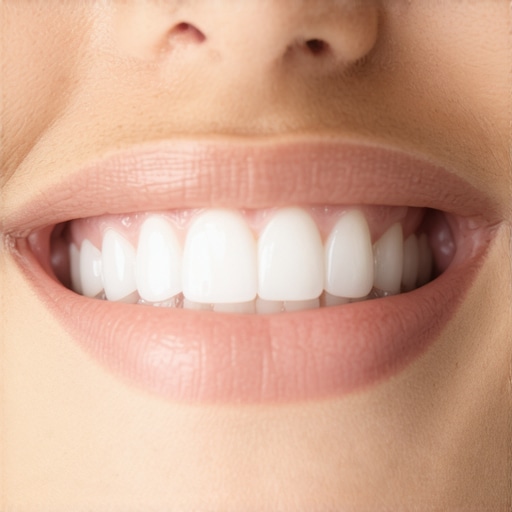Unlocking the Future of Cosmetic Dentistry: Advanced Insights into Invisalign and Veneers for a Flawless Smile in 2024
In the rapidly evolving landscape of cosmetic dentistry, the pursuit of a perfect smile has transcended traditional boundaries, integrating cutting-edge technologies like Invisalign aligners and porcelain veneers. As an expert in dental aesthetics, I recognize that achieving a harmonious blend of function and beauty requires a nuanced understanding of these modalities, especially in the context of 2024’s innovative trends. This comprehensive exploration aims to provide a layered, expert-level perspective on optimizing smile transformations with these advanced solutions.
Integrating Digital Smile Design with Invisalign & Veneers: A Paradigm Shift in Aesthetic Planning
One of the most significant advances in 2024 is the integration of digital smile design (DSD) with Invisalign and veneer planning. By leveraging 3D imaging and computer-aided design, practitioners can simulate potential outcomes with remarkable precision, reducing uncertainty and aligning patient expectations with achievable results. This synergy enhances not only the predictability of treatment but also facilitates interdisciplinary collaboration between orthodontists and cosmetic dentists, ensuring a cohesive approach to smile makeovers.
Material Science and Surface Optimization: The Role of Advanced Veneer Technologies
Modern porcelain veneers benefit from innovations in material science, such as feldspathic and lithium disilicate ceramics, which offer superior translucency, durability, and biocompatibility. When combined with Invisalign, which subtly corrects malocclusions, veneers can be strategically used to refine the final aesthetic contours. Moreover, surface treatments like nano-ceramic coatings improve stain resistance and mimic natural enamel, elevating the overall quality of smile enhancement.
Addressing Complex Dental Dynamics: When to Prioritize Invisalign or Veneers
In cases where dental alignment issues coexist with aesthetic concerns, a nuanced decision-making process is essential. Invisalign’s biomechanical capabilities allow for gradual correction of malocclusions, while veneers excel in addressing surface imperfections and minor misalignments. For more complex cases involving significant crowding or bite dysfunction, a staged approach—initial orthodontic correction followed by veneer refinement—is often optimal. This layered strategy ensures functional stability alongside aesthetic excellence.
What Are the Latest Techniques for Ensuring Long-Term Stability of Smile Enhancements?
Long-term stability is a paramount concern, especially when combining orthodontic and restorative procedures. Experts recommend utilizing retention strategies such as fixed lingual retainers post-invisalign, coupled with minimally invasive veneer bonding techniques that preserve enamel integrity. Regular follow-ups and patient education on maintenance are crucial for preserving the results over decades. Studies in the Journal of Esthetic and Restorative Dentistry highlight that interdisciplinary approaches significantly reduce relapse risks and enhance patient satisfaction.
To deepen your understanding of these transformative treatments, explore our detailed guide on Invisalign innovations in 2025 or connect with our team for a personalized consultation. Your expertise can contribute to refining these techniques further, advancing the field of smile aesthetics.
Embracing the Nuances of Smile Dynamics: Can We Predict the Unpredictable?
As the field of cosmetic dentistry continues to evolve, one of the most compelling challenges lies in accurately predicting patient-specific outcomes, especially when combining multiple advanced treatments like Invisalign and veneers. While digital smile design (DSD) provides a remarkable foundation, the dynamic nature of individual dental anatomy and tissue response means that some level of unpredictability remains. This prompts an important question: how can clinicians refine their predictive capabilities to enhance treatment planning and patient satisfaction?
What emerging diagnostic tools are redefining precision in smile transformations?
Innovations such as intraoral scanning, 3D facial imaging, and AI-driven predictive modeling are transforming diagnostic accuracy. These technologies enable clinicians to simulate more realistic outcomes by analyzing soft tissue behavior, muscle dynamics, and even patient-specific biological responses. For instance, integrating AI with DSD allows for the creation of personalized treatment algorithms that account for variability in tissue healing and movement patterns, thereby reducing unforeseen complications. According to a recent review in the Journal of Dental Research, such technological integration enhances the predictability of complex smile makeovers, making them more reliable for both clinicians and patients.
Strategic Layering: How Do We Balance Orthodontic and Restorative Interventions?
The debate often centers on whether to prioritize orthodontic correction or aesthetic restoration when planning a smile makeover. The layered approach recommends a comprehensive evaluation—considering functional, aesthetic, and biological factors—to determine the optimal sequence. For example, initiating treatment with Invisalign to address malocclusions can create a more stable foundation for subsequent veneer placement, thereby minimizing risks of relapse or aesthetic compromise. Conversely, in cases with minor misalignments, veneers might be used to correct surface imperfections initially, with slight orthodontic adjustments made later if necessary.
For a deeper dive into combining these modalities seamlessly, explore our detailed guide on Invisalign and veneers ultimate smile correction. This layered methodology not only ensures aesthetic excellence but also promotes long-term stability, which is crucial for patient confidence and satisfaction.
Innovating Surface Treatments and Material Science for Longevity
Material science continues to push boundaries with the development of ultra-thin, highly translucent ceramics like lithium disilicate, which mimic natural enamel more convincingly than ever before. Coupled with surface treatments such as nano-ceramic coatings, these materials resist staining and wear, extending the lifespan of restorations. When used in conjunction with minimally invasive bonding techniques, clinicians can preserve maximum enamel, reducing sensitivity and increasing the durability of the smile makeover.
Understanding the interaction between material properties and biological response allows practitioners to tailor treatments that align with individual patient habits and oral environments. For example, patients with high acidity diets might benefit from specific surface coatings that inhibit enamel erosion, thereby safeguarding their investment in aesthetic enhancements.
How can we leverage ongoing research to further refine these advanced materials and techniques?
Keeping abreast of scientific advancements and clinical trials is essential for integrating the latest innovations into practice. Regularly reviewing publications like the International Journal of Prosthodontics or trusted sources ensures that practitioners stay at the forefront of material innovation, ultimately translating into better patient care and more predictable outcomes.
Are you interested in exploring how these advanced techniques can be customized for your unique dental practice? Contact us for a personalized consultation or share your experiences with innovative smile transformation methods in the comments below. For more insights, don’t miss our comprehensive articles on Invisalign innovations in 2025 or Veneers Made Simple. Your journey toward a perfect smile begins with informed choices and expert guidance.
Harnessing Cutting-Edge Material Science to Elevate Smile Longevity in 2024
Recent breakthroughs in ceramic technology are transforming the landscape of restorative dentistry, enabling practitioners to craft veneers and restorations that not only mimic natural enamel but also outperform traditional materials in durability and stain resistance. Lithium disilicate ceramics, renowned for their translucency and strength, are now being combined with nano-ceramic surface coatings that act as a shield against everyday wear and tear, significantly extending the lifespan of aesthetic restorations.
These advanced materials are designed with biological compatibility in mind, reducing the risk of hypersensitivity and promoting tissue health. Moreover, their ultra-thin profiles mean less invasive preparation is required, preserving maximal enamel integrity—a crucial factor for long-term stability.
What are the latest innovations in ceramic surface treatments that enhance durability?
Surface treatments such as nanocoatings and laser-activated glazing techniques are at the forefront of research, offering enhanced resistance to staining, plaque accumulation, and surface abrasion. For instance, nano-ceramic coatings create a smooth, hydrophobic surface that repels discolorants and reduces bacterial adhesion, thereby maintaining the aesthetic and hygienic quality of veneers over decades.
Incorporating these treatments into clinical practice involves a meticulous bonding protocol, ensuring that the surface modifications do not compromise the adhesive interface. Recent studies in the International Journal of Prosthodontics have demonstrated that such surface enhancements can double the functional lifespan of porcelain veneers, especially in patients with high aesthetic demands and challenging oral environments.
Innovative Strategies for Maintaining Optimal Enamel Preservation During Restorative Procedures
Enamel preservation is paramount for long-term success, particularly as the industry shifts toward minimally invasive techniques. Utilizing digital planning tools like CAD/CAM systems allows precise removal of minimal tooth structure, while ultrathin veneers and conservative bonding techniques safeguard the remaining enamel layer.
Additionally, the application of bioactive materials, such as resin-modified glass ionomers, can serve as a protective layer that promotes remineralization and reduces sensitivity post-procedure. These materials interact favorably with natural tooth tissue, creating a resilient interface that withstands functional stresses.
Furthermore, patient-specific factors—such as occlusal forces and dietary habits—must be meticulously evaluated to tailor treatments that minimize the risk of fracture or debonding. Ongoing research underscores the importance of personalized treatment planning, integrating biomechanical assessments with material science advancements to optimize outcomes.
How can practitioners incorporate emerging research into everyday clinical protocols to maximize restoration longevity?
Regular participation in continuing education, subscription to peer-reviewed journals like the Journal of Esthetic and Restorative Dentistry, and collaboration with material scientists are essential for staying abreast of innovations. Implementing evidence-based protocols—such as the use of nano-ceramic surface treatments and minimally invasive preparation—can markedly improve patient satisfaction and reduce the need for future repairs.
If you are eager to deepen your understanding of these cutting-edge techniques, consider consulting with industry experts or attending specialized workshops focused on material science and conservative restoration strategies. Your proactive approach not only enhances your clinical outcomes but also positions your practice at the forefront of aesthetic dentistry innovation.
Breaking New Ground: The Role of 3D Printing in Custom Smile Design for 2024
As the forefront of cosmetic dentistry continues to evolve, the integration of 3D printing technology has emerged as a game-changer in creating highly personalized smile solutions. This revolutionary approach allows clinicians to produce precise, patient-specific mock-ups, provisional restorations, and even final veneers with unprecedented accuracy. By leveraging digital workflows and biocompatible resins, practitioners can streamline the fabrication process, reduce turnaround times, and enhance the predictability of aesthetic outcomes.
How Can Advanced AI Algorithms Optimize Treatment Sequencing?
Artificial intelligence (AI) is increasingly being harnessed to refine treatment planning, especially when combining Invisalign and veneers. Sophisticated algorithms analyze vast datasets of case histories, soft tissue response patterns, and biomechanical variables to recommend optimal sequencing strategies. This enables clinicians to anticipate potential complications, customize force vectors, and improve overall treatment stability. According to recent studies published in the Journal of Dental Research, AI-driven planning significantly elevates the precision and efficacy of complex smile makeovers.
What Are the Cutting-Edge Surface Technologies for Enhancing Veneer Longevity?
Surface modification techniques such as laser-activated glazing and plasma polymerization are revolutionizing veneer durability. These advanced treatments create ultra-smooth, hydrophobic surfaces resistant to staining, bacterial adhesion, and wear. When combined with nano-ceramic coatings, they form a robust barrier that extends the lifespan of restorations, especially in patients with high aesthetic expectations or challenging oral environments. This synergy of material science and surface engineering ensures that smile enhancements endure the test of time.
Can We Predict and Mitigate the Impact of Soft Tissue Dynamics?
One of the persistent challenges in smile design is accounting for the influence of soft tissue behavior on final aesthetics. Emerging diagnostic tools, such as dynamic facial scanning and elastography, provide real-time insights into tissue elasticity and muscle activity. Integrating these data into digital smile design allows for more accurate simulation of gingival contours and lip support post-treatment. Consequently, clinicians can preemptively address issues like gummy smiles or uneven gingival margins, elevating the predictability of aesthetic results.

Image prompt: High-resolution 3D printer producing a customized dental veneer model for precise smile design in cosmetic dentistry.
Advanced Interdisciplinary Collaboration: Seamless Integration of Orthodontics and Restorative Dentistry
Facilitating effective interdisciplinary collaboration is vital for optimized outcomes in complex cases. Using integrated digital platforms, orthodontists and restorative dentists can share real-time data, including intraoral scans, CBCT images, and treatment simulations. This cohesive approach ensures that orthodontic movements are precisely coordinated with restorative plans, minimizing the need for re-treatment and enhancing long-term stability. For example, pre-aligning teeth with Invisalign before veneer placement ensures harmonious proportions and functional occlusion.
How Do Bioactive Materials Contribute to Enamel Preservation and Biological Compatibility?
Incorporating bioactive materials such as resin-modified glass ionomers and bioactive ceramics into veneer bonding protocols fosters remineralization and tissue integration. These materials release beneficial ions that promote natural enamel regeneration and reduce post-procedural sensitivity. Their use aligns with the principles of minimally invasive dentistry, maintaining maximum tooth structure while achieving durable aesthetic results. Ongoing research in bioactive composites underscores their potential in advancing restorative longevity and biological compatibility.
What are the implications of these technological advancements for future clinical practice?
Adopting these innovations demands continuous professional development and investment in cutting-edge equipment. Clinicians who stay informed and embrace these tools can offer unparalleled treatment experiences, setting new standards in aesthetic excellence. To explore these advancements further, consider participating in specialized workshops, engaging with industry thought leaders, and subscribing to reputable journals like the International Journal of Prosthodontics. Your proactive pursuit of knowledge ensures your practice remains at the vanguard of cosmetic dentistry evolution.
Expert Insights & Advanced Considerations
1. Integrating AI-Driven Diagnostics Enhances Predictability
Utilizing artificial intelligence in diagnostic workflows enables precise treatment simulations, accounting for soft tissue dynamics and individual biological responses, which significantly improves the accuracy of smile makeover outcomes involving Invisalign and veneers.
2. Emphasizing Enamel Preservation Through Minimally Invasive Techniques
Adopting digital planning tools such as CAD/CAM systems and conservative bonding protocols ensures maximum enamel preservation, which is crucial for the longevity and stability of aesthetic restorations in complex cases.
3. Material Science Continues to Evolve with Bioactive and Nano-Coated Ceramics
Emerging ceramic materials with nano-ceramic surface coatings provide enhanced stain resistance and wear durability, extending the lifespan of veneers while maintaining natural aesthetics in diverse oral environments.
4. Embracing 3D Printing for Customized Smile Design
3D printing technology facilitates the creation of highly accurate, patient-specific mock-ups and provisional restorations, streamlining the aesthetic planning process and reducing turnaround times for complex smile transformations.
5. Integrating Digital Smile Design with Interdisciplinary Collaboration
Digital platforms allowing seamless data sharing between orthodontists and cosmetic dentists ensure synchronized treatment planning, optimizing functional and aesthetic results for comprehensive smile makeovers.
Curated Expert Resources
- International Journal of Prosthodontics: Offers peer-reviewed research on advanced ceramic materials and surface treatments, providing evidence-based insights into longevity and durability improvements.
- Journal of Dental Research: Features innovative diagnostic tools like AI modeling and dynamic facial imaging, crucial for enhancing predictability in complex cases.
- American Academy of Cosmetic Dentistry (AACD): Provides guidelines and case studies on interdisciplinary approaches, integrating orthodontics and restorative dentistry for holistic smile design.
- CAD/CAM and 3D Printing in Dentistry: Industry publications and workshops that demonstrate practical applications of digital fabrication technologies for customized smile solutions.
- Recent Clinical Trials in Bioactive Materials: Explore cutting-edge research on bioactive and nano-ceramic coatings that extend restoration lifespan and promote tissue health.
Final Expert Perspective
In 2024, the frontier of smile makeovers with Invisalign and veneers is defined by technological integration and material innovation. Embracing AI diagnostics, minimally invasive techniques, and advanced materials not only elevates aesthetic outcomes but also ensures long-term stability and biological harmony. For practitioners committed to excellence, staying informed through authoritative sources and leveraging digital tools is essential. Your expertise and proactive engagement will shape the future landscape of cosmetic dentistry—where precision meets artistry. Engage with these insights, share your experiences, or explore specialized resources to remain at the forefront of this transformative field.

